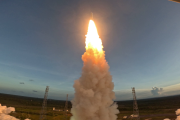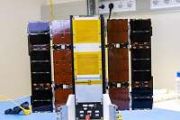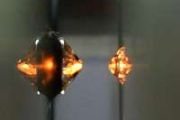
Copernical Team
Kleos' Patrol Mission satellites to launch in April
 Kleos Space S.A, a space-powered Radio Frequency Reconnaissance data-as-a- service (DaaS) company, announces the Kleos Patrol Mission (KSF2) satellites, planned to launch in
January 2022, have been remanifested to launch on the SpaceX Transporter-4 mission scheduled for April 2022.
Kleos is partnering with launch services provider Spaceflight Inc. to deploy its Patrol Mission (KSF2)
Kleos Space S.A, a space-powered Radio Frequency Reconnaissance data-as-a- service (DaaS) company, announces the Kleos Patrol Mission (KSF2) satellites, planned to launch in
January 2022, have been remanifested to launch on the SpaceX Transporter-4 mission scheduled for April 2022.
Kleos is partnering with launch services provider Spaceflight Inc. to deploy its Patrol Mission (KSF2) Using High Temperature Composites For Sustainable Space Travel
 On the ground, sound waves travel at around 340 metres per second. An aircraft is Supersonic when it exceeds the speed of sound. Hypersonic speed is more than five times the speed of sound - or 'Mach 5' - which is just over 6,000 kilometres per hour.
At Mach 5 and above, friction caused by molecules flowing over the hypersonic aircraft can generate temperatures in excess of 2000 Celsius. S
On the ground, sound waves travel at around 340 metres per second. An aircraft is Supersonic when it exceeds the speed of sound. Hypersonic speed is more than five times the speed of sound - or 'Mach 5' - which is just over 6,000 kilometres per hour.
At Mach 5 and above, friction caused by molecules flowing over the hypersonic aircraft can generate temperatures in excess of 2000 Celsius. S SpaceX launches 105 satellites from Florida
 SpaceX successfully launched 105 satellites from Florida on Thursday morning as part of its rideshare program, which it uses to release satellites for dozens of customers in a single mission.
The Falcon 9 rocket lifted off into blue sky on the Transporter-3 mission as planned at 10:25 a.m. EST from Complex 40 at Cape Canaveral Space Force Station near Kennedy Space Center.
"Alrig
SpaceX successfully launched 105 satellites from Florida on Thursday morning as part of its rideshare program, which it uses to release satellites for dozens of customers in a single mission.
The Falcon 9 rocket lifted off into blue sky on the Transporter-3 mission as planned at 10:25 a.m. EST from Complex 40 at Cape Canaveral Space Force Station near Kennedy Space Center.
"Alrig Astronomers confront massive black hole at the heart of the Milky Way, Sagittarius A*
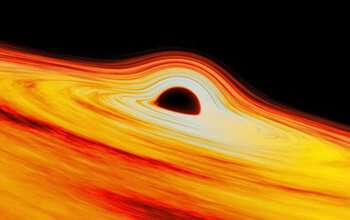
At the center of the Milky Way is a supermassive black hole, 4.3 million times bigger than the sun, known as Sagittarius A*. Until recently, it was not clear how much of the matter at the heart of the galaxy was Sagittarius A*. Astronomers measured the velocities of four distant stars around the black hole. The movement of the stars indicates the mass at the galaxy's center is composed almost entirely of matter from Sagittarius A*, leaving little room for stars, other black holes, interstellar dust and gas, or dark matter.
Solar power, going down
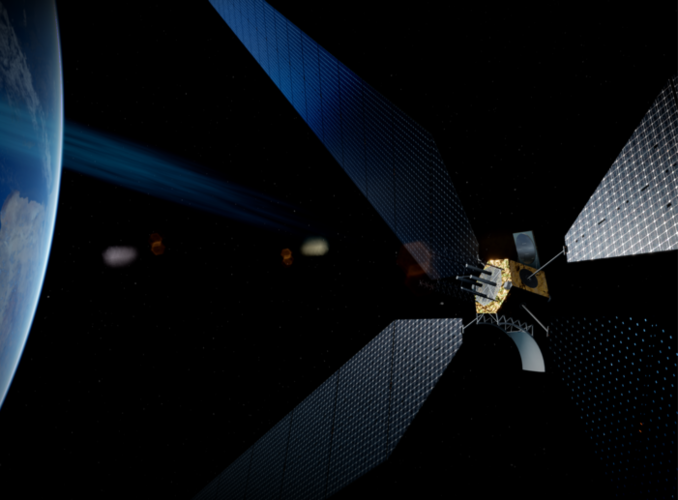 Image:
Solar power, going down
Image:
Solar power, going down International collaboration offers new evidence of a gravitational wave background
 The results of a comprehensive search for a background of ultra-low frequency gravitational waves has been announced by an international team of astronomers including scientists from the Institute for Gravitational Wave Astronomy at the University of Birmingham.
These light-year-scale ripples, a consequence of Einstein's theory of general relativity, permeate all of spacetime and could ori
The results of a comprehensive search for a background of ultra-low frequency gravitational waves has been announced by an international team of astronomers including scientists from the Institute for Gravitational Wave Astronomy at the University of Birmingham.
These light-year-scale ripples, a consequence of Einstein's theory of general relativity, permeate all of spacetime and could ori Planet to launch 44 SuperDove satellites on SpaceX's Falcon 9
 Planet Labs PBC reports announced that the launch of their Flock 4x, consisting of 44 SuperDove satellites, will take place on Thursday, January 13th on SpaceX's Falcon 9 Transporter-3 SSO. This marks the first satellite launch under Planet's new multi-year, multi-launch rideshare agreement with SpaceX.
Planet operates the world's largest constellation of Earth observation satellites; and
Planet Labs PBC reports announced that the launch of their Flock 4x, consisting of 44 SuperDove satellites, will take place on Thursday, January 13th on SpaceX's Falcon 9 Transporter-3 SSO. This marks the first satellite launch under Planet's new multi-year, multi-launch rideshare agreement with SpaceX.
Planet operates the world's largest constellation of Earth observation satellites; and CPUT launches 3rd Satellite mission this week
 On Thursday 13 January the Cape Peninsula University of Technology is set to launch its third satellite mission into space from the Cape Canaveral launch site in the USA.
The MDASat (Marine Domain Awareness) constellation has two main priorities namely ocean economy and healthcare and has been mandated by the Department of Science and Innovation to enhance South Africa's ocean's sovereignt
On Thursday 13 January the Cape Peninsula University of Technology is set to launch its third satellite mission into space from the Cape Canaveral launch site in the USA.
The MDASat (Marine Domain Awareness) constellation has two main priorities namely ocean economy and healthcare and has been mandated by the Department of Science and Innovation to enhance South Africa's ocean's sovereignt North Pole solar eclipse excited auroras on the other side of the world
 A solar eclipse over the Arctic created changes in auroras in both of Earth's hemispheres due to connections through the planet's magnetic field, according to a new study. The new work could help scientists predict changes in the near-Earth environment that can interfere with satellite communication.
On 10 June 2021, the moon's shadow darkened much of the Earth's northern polar region, pro
A solar eclipse over the Arctic created changes in auroras in both of Earth's hemispheres due to connections through the planet's magnetic field, according to a new study. The new work could help scientists predict changes in the near-Earth environment that can interfere with satellite communication.
On 10 June 2021, the moon's shadow darkened much of the Earth's northern polar region, pro Researchers Observe Massive CME on Distant, Sun-Like Star
 EK Draconis illuminates an unimagined picture of how superflares may affect interplanetary space through coronal mass ejections
Welcome to the New Year! While Earth celebrated 2022's arrival with displays of fireworks, the greatest "fireworks show" in our solar system often occurs on the Sun. Its atmosphere is a venue for dynamic sunspots, solar flares, and dramatic encores of released magnetic
EK Draconis illuminates an unimagined picture of how superflares may affect interplanetary space through coronal mass ejections
Welcome to the New Year! While Earth celebrated 2022's arrival with displays of fireworks, the greatest "fireworks show" in our solar system often occurs on the Sun. Its atmosphere is a venue for dynamic sunspots, solar flares, and dramatic encores of released magnetic 


